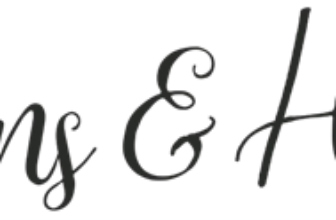
Mosquito Traps – How to Get Rid of Mosquitoes While Sipping Daiquiris on the Veranda
[ad_1]
Mosquitoes were made for hunting humans, what with their compound eyes capable of spotting the slightest movements and receptors so sensitive, they can detect the smell of exhaled breath. Lucky for us, those same abilities also tend to lead them straight into mosquito traps.
The traps work by mimicking the smell and sight of prey, fooling mosquitoes into sensing a blood meal close at hand. But when they get near, powerful fans capture them and force them into containers. Once in, they can’t get out, and the mosquitoes die.
A good mosquito trap, properly placed and used, can attract and kill thousands of mosquitoes in a single night, while you are left free to enjoy your yard undisturbed. Over a period of a couple of months, the trap can decimate, possibly even collapse, the local mosquito population.
All it takes is a little work to get the machine set up and some regular, but minor maintenance to ensure peak performance. The mosquito trap will do the rest.
Unfortunately, mosquito control is a complicated task, and there isn’t one easy solution. Mosquito traps by themselves won’t make your insect troubles disappear altogether, but they are an integral part of keeping your home comfortable and safe.
Mosquitoes are always just a breath away
To understand the way a mosquito trap works, you first need to understand how and why mosquitoes hunt us.
OK, have you ever wondered how mosquitoes always seem to be able to find you, even in the dark? It’s mostly your breath. That’s not a joke. Simply exhaling is enough to draw in a blood-hungry mosquito.
When you let out a breath, tiny amounts of carbon dioxide are released into the air. Those little plumes of CO2 rise up and drift along on the breeze.
Mosquitoes have extremely sensitive receptors on their antennae that can detect trace amounts of CO2. They fly into the wind, searching for those traces, and, when they find them, follow the smell of the exhaled gas to its source.
According to University of Florida researchers, the CO2 plume from a person’s breath can stir the senses of mosquitoes as far as 40 miles away. Fortunately, most mosquitoes can only fly one to three miles, tops.
As the mosquitoes get closer to the source, their two compound eyes – large rounded globes covered with tiny individual lenses – pick up movement and color, while their ocelli, or simple eyes, sense light waves.
People moving around, wearing bright colors, near electric lights are sure to catch their attention.
We smell like food to mosquitoes
Once mosquitoes are within 20 or 30 feet, their scent receptors begin to detect other smells, too.
That includes lactic acid on the skin and octenol, a chemical found in our sweat and in the exhalation of cows. Beyond that, human skin produces more than 340 chemical odors, and some smell better to mosquitoes than others, although which ones and why are still matters of research.
The task of identifying the smells is difficult because mosquitoes are attracted not by single odors, but by combinations of them. Figuring out the right combos depends mainly on time-consuming trial and error.
US Department of Agriculture scientists do know that mosquitoes are attracted by the smell of dirty socks and Limburger cheese – apparently the same bacteria develops on both – and they’re also fond of certain soaps, lotions and perfumes, when combined with the natural smells of certain people.
Mosquitoes have shown preferences for people who excrete high amounts of uric acid and cholesterol through their skin, as well as people with high amounts of B vitamins in their systems. They also tend to choose larger people and pregnant women, likely because of the larger amounts of CO2 exhaled.
Basically, the more you sweat and the harder you breathe, the more attractive you are going to be to mosquitoes.
The mosquito moves in for the bite
The final giveaway is body temperature.
Sensors on the antennae can feel heat radiating from a person’s body, helping the mosquito zero in on its prey. Exertion, alcohol, even wearing dark clothes – which radiate heat – can make you a hotter target.
Mosquitoes use the heat sensors to find capillaries pulsing with blood near the surface.
Now this may surprise you: When the bite comes, it will always come from a female mosquito. Both males and females feed on fruit and plant nectar, but only the female takes blood meals.
The females do it not for the food, but to aid in the reproductive process. Their eggs are fertilized by males within days of emerging from the pupal cocoon. However, their eggs don’t fully develop until they’ve taken in protein from blood.
The mosquito lands and sinks her proboscis into the skin. The proboscis is a long, slender mouthpart with a pointed end for piercing. It contains two tubes, one which draws in blood, and a second that injects anti-coagulants to help keep the blood flowing.
She feeds until her abdomen is full, then flies away to rest a couple of days until she is ready to lay her eggs. At least, that’s how it is supposed to happen.
Bug research leads to mosquito traps
Entomologists and mosquito control experts need specimens to examine, and that means they have to trap them.
For many years, they did it with the New Jersey Light Trap. Like its name implies, it is a simple device that uses a plain 25-watt bulb to draw mosquitoes toward a cylinder with a hidden fan that sucks the mosquitoes into a catch area.
But as scientists learned more about attractants, they began to incorporate them into the standard light traps. For example, knowing that carbon dioxide lures mosquitoes, they started adding dry ice, which releases the gas, increasing the numbers of mosquitoes lured in for the catch.
Studies showed that mosquito traps that used CO2 could catch 10-15 times more mosquitoes in a night than a New Jersey Light Trap.
In the late ’90s, private companies got into the research, experimenting with human skin odors and ultraviolet light waves, and soon, there were newer, more efficient commercial mosquito traps on the market for home use.
All mosquito traps use some variation of the same four basic attractants to draw the insects: CO2, octenol, light, and heat. The differences lie in the designs of the attractants and the ways they are employed.
How do mosquito traps work?
One of the most successful mosquito trap brands, the Mega Catch, depends mainly on its unique lighting array and automated dispersal of synthetic human fragrance.
The machine fires off oscillating frequencies of visible and UV light that have been proven to attract the attention of mosquitoes. At the same time, the machine releases plumes of octenol to excite the insects’ scent sensors.
Inside the Mega Catch traps, infrared heat sources give off warmth similar to a human body, luring the mosquitoes even closer. Once they are near enough, a fan catches them and forces them into a container.
Some models of the traps also use canisters that release trace amounts of CO2 to mix with the octenol, increasing the effectiveness of the trap four-fold. Mega Catch traps, particularly the models that use both CO2 and octenol, can draw insects from as much as 150 feet away.
According to the American Mosquito Control Association, “A number of studies have shown that traps using CO2 and (octenol) normally catch numbers of mosquitoes several orders of magnitude more than their solely CO2-baited counterparts.”
While the organization does not endorse specific products, it reports that the science behind the traps is solid.
Public health researchers in Australia tested the Mega Catch Mosquito Traps against another popular brand in 2004 and found that the Mega Catch mosquito trap outperformed the other on 10 of 12 nights, capturing more than 44,000 female mosquitoes from 17 species. The other trap caught 24,000 mosquitoes.
In another test conducted by the U.S. Department of Agriculture, the Mega Catch trapped more than 3,700 mosquitoes in a residential Florida neighborhood in one night, about three times more than a another brand of trap.
Clearing the mosquitoes from the air
Again, mosquito traps, even highly effective ones, aren’t going to eliminate your mosquito problems entirely.
You still need to practice good mosquito control around your home by preventing standing water, employing biological controls, and possibly spraying. You’ll also have to remember to use your mosquito trap properly and maintain it regularly.
One key to getting the most from your mosquito trap is making sure you put it in the proper place.
Don’t put it near people because that just draws the mosquitoes toward their targets. The best placement is upwind, between the source of the mosquitoes – a neighbor’s overgrown yard, or a nearby pond – and the spot where people gather, probably your deck or patio.
If possible, put the trap somewhere shaded because mosquitoes try to avoid the sun.
And don’t only turn the trap on while you’re outside. Run it continuously through mosquito season, especially during the peak feeding hours. Traps like the Mega Catch have settings that can turn the machine on and off at certain pre-selected times.
Remember, the more female mosquitoes you trap and kill, the fewer there will be to lay eggs. In six to eight weeks, the population will decrease to the point of collapse.
Occasionally, you’ll need to clean out the catch containers, add new CO2 canisters, and change out fresh octenol strips.
And then it should not be long before the whining of biting insects becomes an uncommon sound in your backyard.



